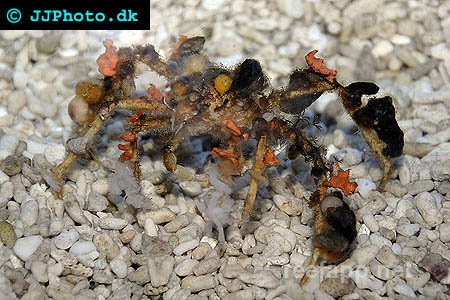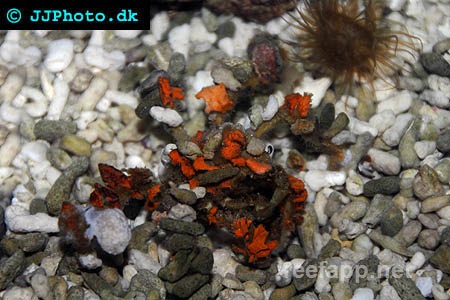Camposcia retusa
| Latin name | Camposcia retusa |
|---|---|
| Local name | Decorator crab |
| Family | Majoidea - Camposcia |
| Origin | East Indian Ocean, Indonesia |
| Max length | 10 cm (3.9") |
| Minimum volume |
100 l (26 gal) |
|---|---|
| Hardiness |
Hardy |
| Suitable for aquarium |
Suitable with care |
| Reef safe |
Reef safe with caution |
| Aggressiveness | Unknown |
| Recommended |
Fish Larger crustaceans (Shrimp, crabs...) Other invertebrates Small crustaceans (Krill, mysis, artemia...) |
|---|---|
| Maybee |
Soft coral |
Some individuals of this species can find it hard to acclimatize, but others are problem free.
This species is nocturnal and therefore the most active when the light is dimmed or turned off.
Will sometimes cut at the soft coral to decorate themselves, and will in some cases actually eat the it.
Sometimes they will use rock, algae or similar as decoration.
Most crabs are not wanted in coral aquaria, although there are a few which are either fun or useful.
James W. Fatherree. 2010. Aquarium Invertebrates: Crabs in the Marine Aquarium - Advanced Aquarist - (English)
Ronald L. Shimek. 2004. Marine Invertebrates (PocketExpert Guide) - TFH Publications / Microcosm Ltd. - (English)
Bob Fenner. Crabs For Marine Aquariums? Part 1, Part 2, Part 3 - Wet Web Media - (English)




